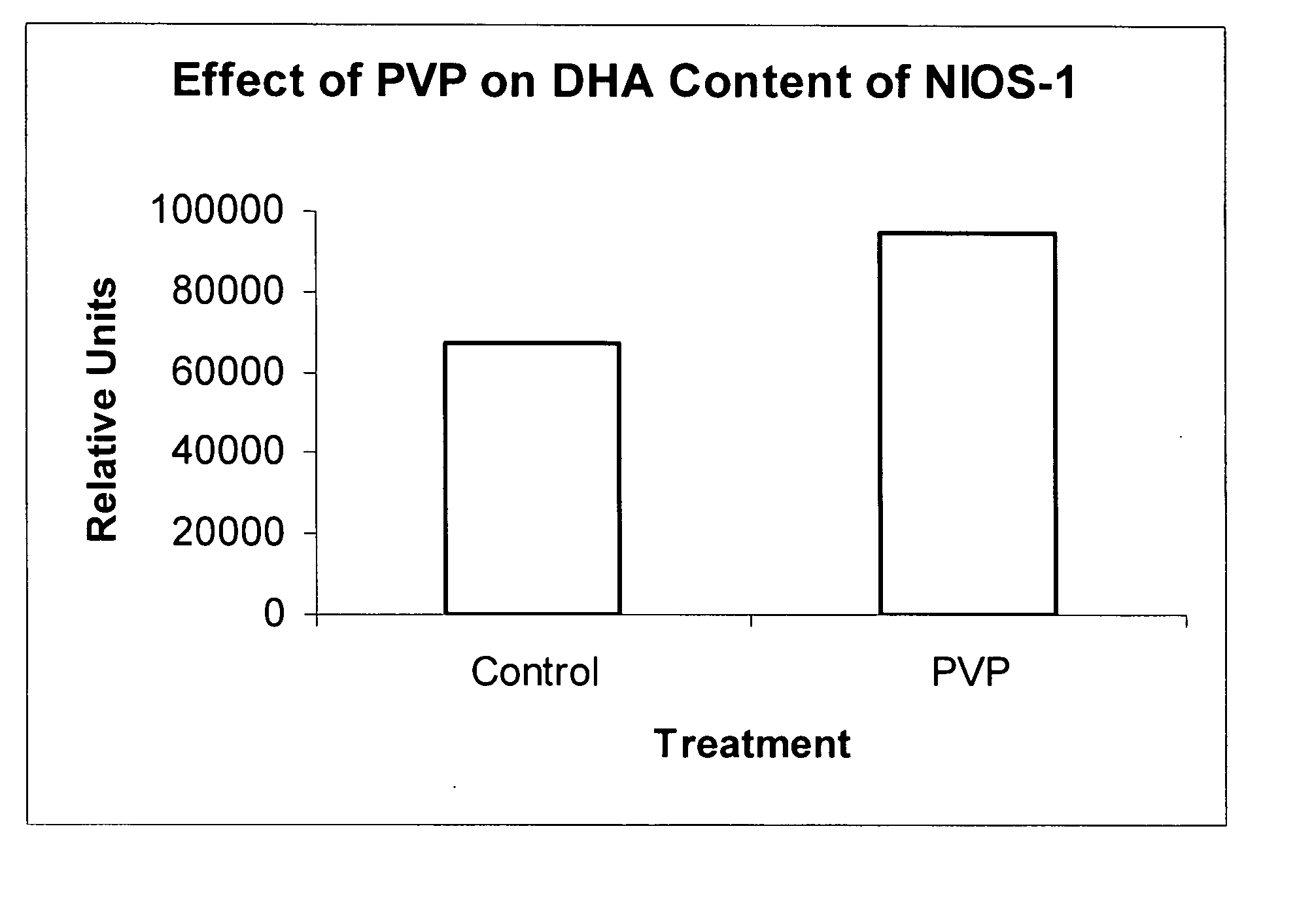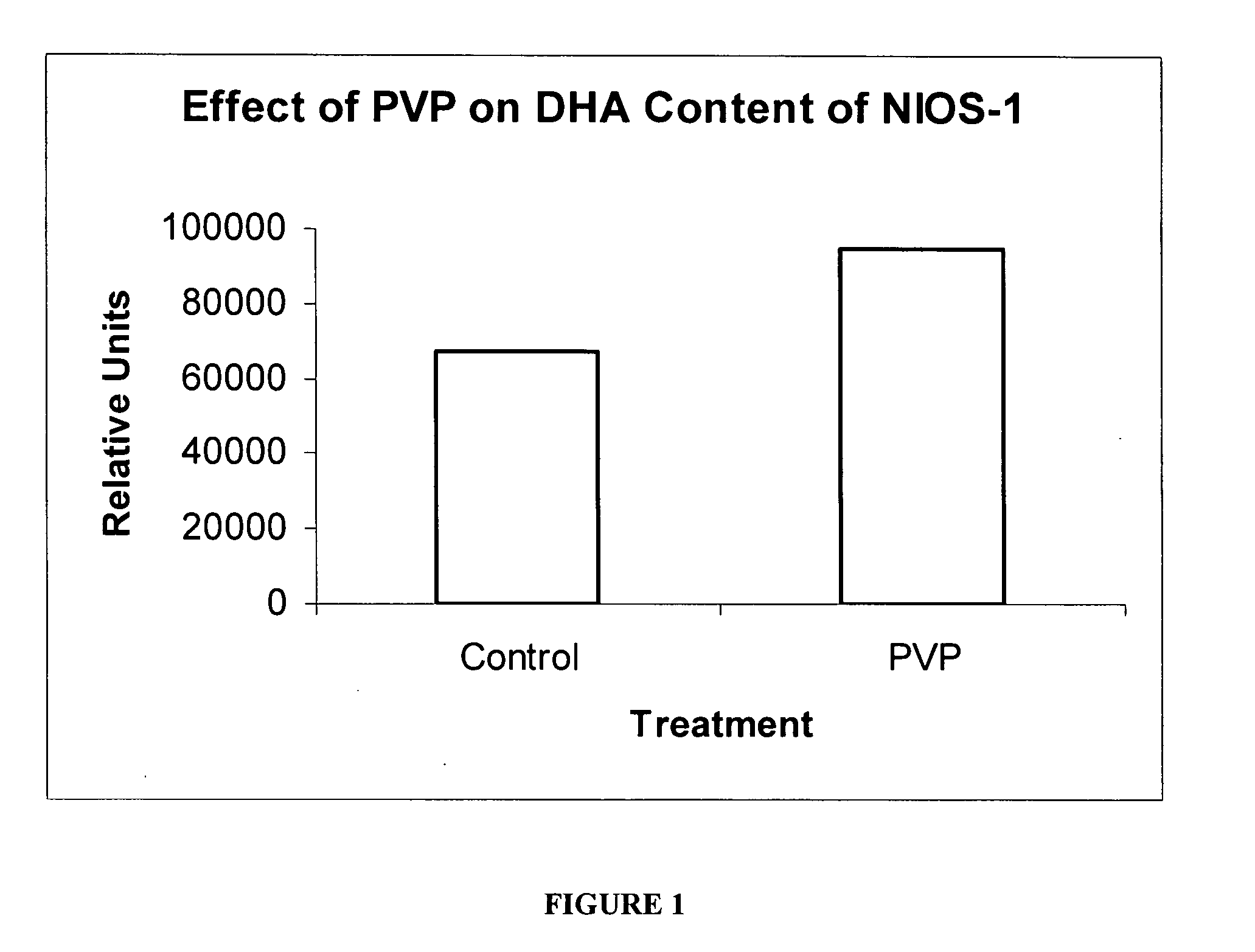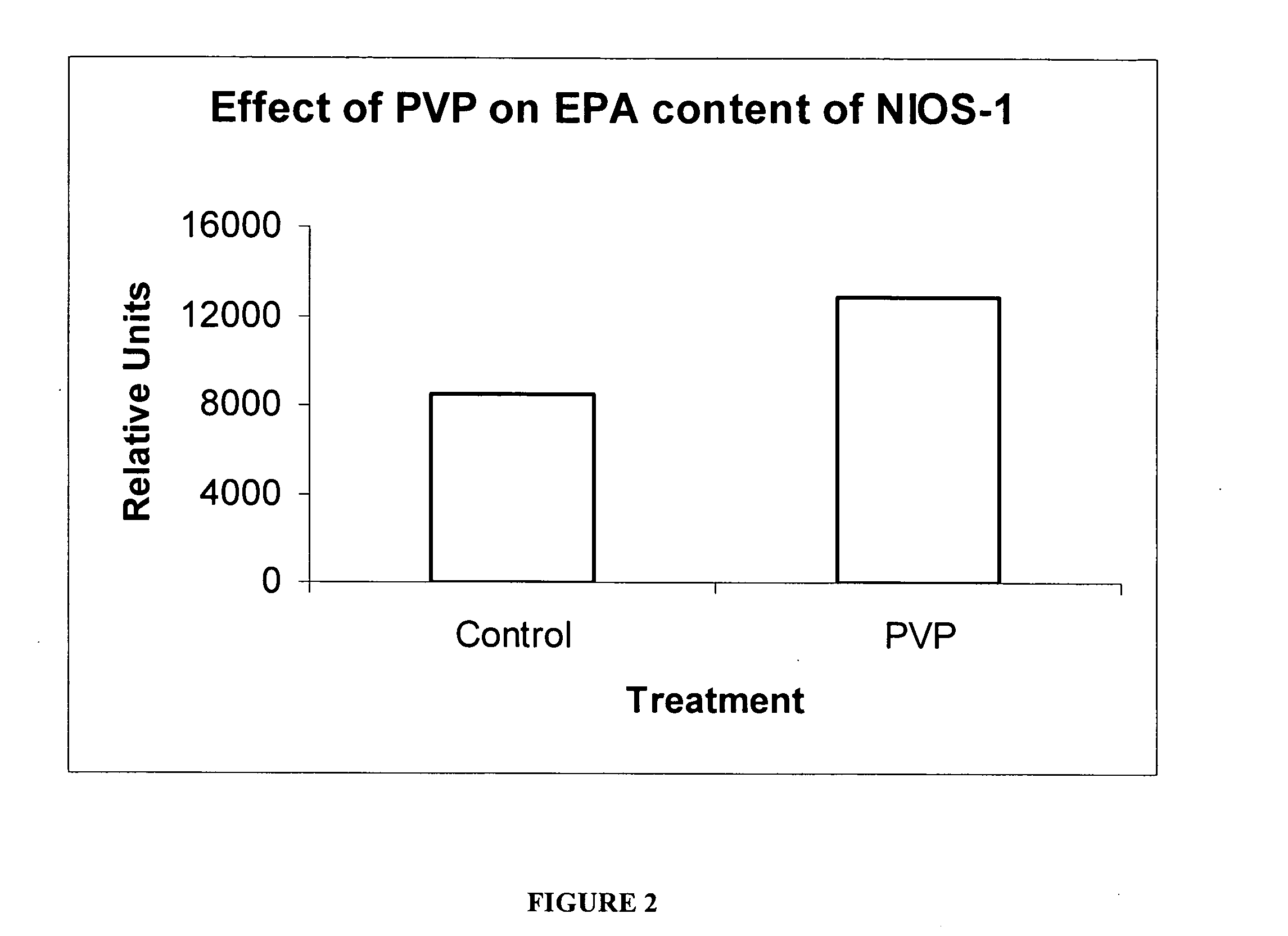Method of enhancing levels of polyunsaturated fatty acids in thraustochytrid protists
a technology of thraustochytrid protists and polyunsaturated fatty acids, which is applied in the field of enhancing the levels of polyunsaturated fatty acids in thraustochytrid protists, can solve the problems of unsatisfactory human consumption, fish oil has the disadvantage of an unpleasant odor, and fails to provide any suggestion that the process is described
- Summary
- Abstract
- Description
- Claims
- Application Information
AI Technical Summary
Benefits of technology
Problems solved by technology
Method used
Image
Examples
example 1
[0043] A culture of a thraustochytrid, belonging to strain #NIOS-1 was inoculated into 100 ml of a culture medium containing: gelatin peptone—1.5% Wt.; Yeast extract—0.1% Wt.; Glucose—1.0% Wt. and sea water—100 ml. The cultures were grown for 2 days on a shaker at room temperature of 25-30° C. These cultures were used as innoculum for the experiment. A set of cultures was set up using a medium with the same composition as above, containing an addition of 1.0% polyvinyl pyrrolidone. The experiment was carried out by adding 10 ml of the inoculum into 100 ml of the culture medium of the experimental set. The cultures were grown for 3 days on a shaker at room temperature of 25-30 degree C. At the end of this period, cells were harvested by centrifugation, fatty acids extracted and analyzed by gas chromatography. Cultures grown in media with increased viscosity by adding PVP contained nearly 0.5 times more DHA than those grown in a medium without increased PVP (FIG. 1).
example 2
[0044] A culture of a thraustochytrid, belonging to strain #NIOS-1 was inoculated into 100 ml of a culture medium containing: gelatin peptone—1.5% Wt.; Yeast extract—0.1% Wt.; Glucose—1.0% Wt. and sea water—100 ml. The cultures were grown for 2 days on a shaker at room temperature of 25-30 degree C. These cultures were used as inoculum for the experiment. A set of cultures was set up using a medium with the same composition as above, containing an addition of 1.0% polyvinyl pyrrolidone. The experiment was carried out by adding 10 ml of the inoculum into 100 ml of the culture medium of the experimental set. The cultures were grown for 3 days on a shaker at room temperature of 25-30 degree C. At the end of this period, cells were harvested by centrifugation, fatty acids extracted and analyzed by gas chromatography. Cultures grown in media with increased viscosity by adding PVP contained nearly 0.5 times more EPA than those grown in a medium without increased PVP (FIG. 2).
example 3
[0045] A culture of a thraustochytrid, belonging to strain #NIOS-2 was inoculated into 100 ml of a culture medium containing: gelatin peptone—1.5% Wt.; Yeast extract—0.1% Wt.; Glucose—1.0% Wt. and sea water—100 ml. The cultures were grown for 2 days on a shaker at room temperature of 25-30 degree C. These cultures were used as innoculum for the experiment. A set of cultures was set up using a medium with the same composition as above, containing an addition of 1.0% polyvinyl pyrrolidone. The experiment was carried out by adding 10 ml of the innoculum into 100 ml of the culture medium of the experimental set. The cultures were grown for 3 days on a shaker at room temperature of 25-30 degree C. At the end of this period, cells were harvested by centrifugation, fatty acids extracted and analyzed by gas chromatography. Cultures grown in media with increased viscosity by adding PVP contained nearly 0.5 times more DHA than those grown in a medium without increased PVP (FIG. 3).
PUM
 Login to View More
Login to View More Abstract
Description
Claims
Application Information
 Login to View More
Login to View More - R&D
- Intellectual Property
- Life Sciences
- Materials
- Tech Scout
- Unparalleled Data Quality
- Higher Quality Content
- 60% Fewer Hallucinations
Browse by: Latest US Patents, China's latest patents, Technical Efficacy Thesaurus, Application Domain, Technology Topic, Popular Technical Reports.
© 2025 PatSnap. All rights reserved.Legal|Privacy policy|Modern Slavery Act Transparency Statement|Sitemap|About US| Contact US: help@patsnap.com



